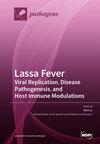Molecular Epidemiology of Hepatitis D Virus in the North-East Region of Romania
IF 3.3
3区 医学
Q2 MICROBIOLOGY
引用次数: 0
Abstract
The hepatitis D virus (HDV) superinfection of individuals with chronic hepatitis B virus (HBV) infection causes severe liver damage and the poorest long-term prognosis among viral hepatitis. This is attributed to the unique pathogenic mechanisms of HDV characterized by a direct cytopathic effect on hepatocytes and a significant impairment of the host immune response. The HDV genotype largely influences the extent of the pathogenic mechanisms with consequences on disease progression towards cirrhosis, liver decompensation, or hepatocellular carcinoma. In this context, identifying the circulating HDV genotypes in European regions with high prevalence, such as Romania, is crucial for effectively managing the long-term liver health. Here, we report the first comprehensive HDV study in Romania that clinically characterizes 82 patients and performs HDV genotyping by combining the nested-PCR reaction with sequencing analysis in 49 samples with an HDV-RNA load higher than 5000 IU/mL. While all isolates in our study belong to the HDV-1 genotype, the phylogenetic analysis based on sequence data from GenBank reveals the presence of the following potential three groups: (i) Italy and France; (ii) Spain; and (iii) Turkey, Iran, Pakistan, and Germany. This broad clustering highlights the recent surge in migration to and from Western Europe and the Middle East. Equally important, no differences in viral markers, clinical and paraclinical parameters, or treatment options were observed between these identified clusters. Nevertheless, this study considerably advances the understanding of hepatitis D epidemiology and clinical aspects in Romania.罗马尼亚东北部地区 D 型肝炎病毒的分子流行病学
丁型肝炎病毒(HDV)超级感染慢性乙型肝炎病毒(HBV)感染者会导致严重的肝损伤,是病毒性肝炎中远期预后最差的一种。这归因于 HDV 独特的致病机制,其特点是对肝细胞产生直接的细胞病理效应,并严重损害宿主的免疫反应。HDV 基因型在很大程度上影响着致病机制的程度,进而导致疾病发展为肝硬化、肝功能失代偿或肝细胞癌。在这种情况下,确定欧洲高流行地区(如罗马尼亚)的循环 HDV 基因型对于有效管理长期肝脏健康至关重要。在此,我们报告了罗马尼亚首次全面的 HDV 研究,该研究对 82 名患者进行了临床特征描述,并对 49 份 HDV-RNA 负荷高于 5000 IU/mL 的样本结合巢式 PCR 反应和测序分析进行了 HDV 基因分型。虽然我们研究中的所有分离株都属于 HDV-1 基因型,但根据 GenBank 中的序列数据进行的系统发生学分析显示,可能存在以下三个群体:(i) 意大利和法国;(ii) 西班牙;(iii) 土耳其、伊朗、巴基斯坦和德国。这种广泛的聚类突显了近期进出西欧和中东的移民潮。同样重要的是,在这些已确定的群组之间没有观察到病毒标记物、临床和准临床参数或治疗方案的差异。尽管如此,这项研究还是大大加深了人们对罗马尼亚丁型肝炎流行病学和临床方面的了解。
本文章由计算机程序翻译,如有差异,请以英文原文为准。
求助全文
约1分钟内获得全文
求助全文
来源期刊

Pathogens
Medicine-Immunology and Allergy
CiteScore
6.40
自引率
8.10%
发文量
1285
审稿时长
17.75 days
期刊介绍:
Pathogens (ISSN 2076-0817) publishes reviews, regular research papers and short notes on all aspects of pathogens and pathogen-host interactions. There is no restriction on the length of the papers. Our aim is to encourage scientists to publish their experimental and theoretical research in as much detail as possible. Full experimental and/or methodical details must be provided for research articles.
 求助内容:
求助内容: 应助结果提醒方式:
应助结果提醒方式:


